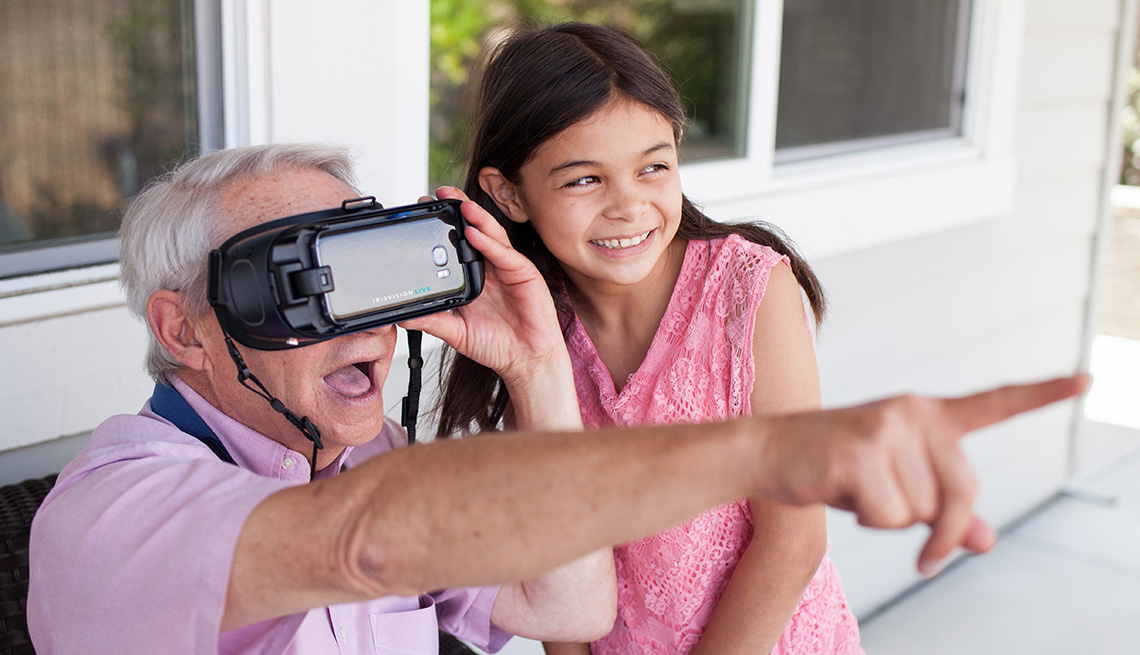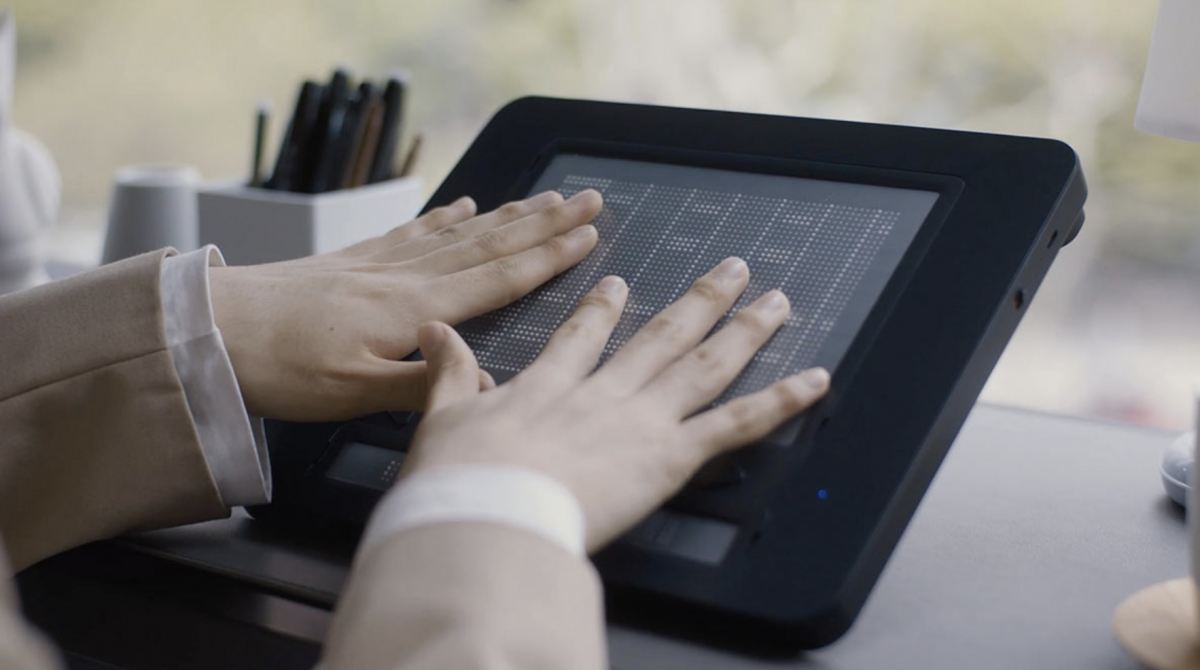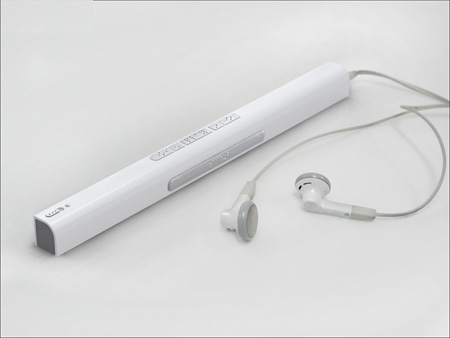Discover Cutting-edge Devices Designed for the Aesthetically Impaired
The growth of ingenious tools for the aesthetically impaired stands for a substantial improvement in ease of access and self-reliance. Technologies such as clever glasses with AI abilities and mobile applications made to supply auditory descriptions are improving day-to-day experiences for customers.
Smart Glasses for Navigation

Smart glasses designed for navigating are reinventing the method aesthetically damaged individuals engage with their environment. These advanced devices utilize a combination of video camera innovation, expert system, and auditory feedback to provide real-time info about environments. By using obstacle discovery systems, clever glasses can notify individuals to potential risks, enabling safer flexibility in both acquainted and unknown setups.
The combination of GPS technology even more enhances navigation capabilities, permitting users to receive auditory instructions as they relocate. This hands-free technique not just cultivates freedom but also encourages aesthetically damaged individuals to navigate metropolitan landscapes with raised confidence. Furthermore, several wise glasses are geared up with features that recognize spots and street indications, giving contextual information that improves the user experience.
In addition, the development of these devices is consistently progressing, with companies functioning to enhance the accuracy of things acknowledgment and expand the variety of navigational attributes. As smart glasses become more inexpensive and available, they hold the possible to considerably transform daily life for aesthetically damaged users. Ultimately, these innovative tools represent an essential action towards inclusivity, offering improved wheelchair and a better sense of autonomy for individuals browsing the world around them.

Mobile Application for Daily Living
How can mobile applications enhance the lives of aesthetically damaged people? Mobile applications are changing the way visually damaged individuals browse their environments, handle everyday jobs, and accessibility information. These applications provide vital assistance with various performances, fostering self-reliance and boosting quality of life.
Numerous cutting-edge mobile apps are developed specifically for day-to-day living. For instance, applications like Be My Eyes link visually impaired users with sighted volunteers using video calls, permitting them to obtain real-time assistance with jobs such as checking out labels or browsing unfamiliar rooms. Seeing AI, established by Microsoft, utilizes man-made knowledge to explain environments, reviewed message, and identify objects, effectively changing a mobile phone right into a powerful tool for daily support.
In addition, navigation applications tailored for the visually impaired, such as Aira and BlindSquare, offer audio-based directions and environmental information, allowing users to traverse their environments securely and with confidence. Beyond navigating and instant support, mobile applications additionally support organization and job administration, with attributes that assist individuals set reminders, produce to-do listings, and track consultations. In recap, mobile applications act as crucial resources, empowering visually impaired individuals to lead more independent and meeting lives.
Wearable Technologies for Assistance
Empowerment via innovation is significantly apparent in the realm of wearable gadgets developed to aid aesthetically damaged people. These innovative devices integrate flawlessly into life, enhancing navigating and supplying necessary responses to customers. Wise glasses geared up with video cameras can review and acknowledge faces text out loud, enabling customers to communicate more with confidence in social and professional setups.
Another noteworthy development is the usage of haptic feedback systems in wearable devices. These systems utilize vibrations or other tactile signals to share information concerning the user's atmosphere, such as obstacles or changes in surface, boosting wheelchair and safety and security. Wearable technologies also include wristbands that connect to smartphones, notifying individuals to alerts through refined resonances, thus enhancing connectivity without reliance on visual signs.
As these innovations remain to develop, they are not just boosting independence for visually damaged individuals however likewise fostering a better sense of incorporation in society. By bridging the space in between challenges encountered in daily living and the capacity for autonomy, wearable technologies act as crucial devices in the pursuit for equal rights and empowerment for those with aesthetic impairments.
Sound Summary Tools
Sound summary devices play a critical click here for more info role in enhancing accessibility for aesthetically damaged individuals, supplying them with the capability to involve with visual media. Voice-activated assistive devices. These tools supply narrated descriptions of crucial visual elements in movies, television shows, and live efficiencies, making certain that users can completely understand the context and emotions conveyed via visuals
Audio summary can be integrated into numerous platforms, consisting of streaming services, cinema screenings, and live movie theater. Numerous preferred streaming services now include audio description as an accessibility attribute, permitting viewers to choose it easily. In enhancement to traditional media, specialized apps likewise exist, providing audio descriptions for art exhibits, museums, and various other social events.
The efficiency of audio description rests on the skill of the narrators, who must communicate aesthetic details succinctly without taking away from the original audio. Advancements in this area are likewise paving the method for more customized experiences, where customers can readjust the degree of information and pacing according to their choices.
Braille Innovations and Gadgets
Braille gadgets and developments have considerably changed the method aesthetically damaged people connect with text and details. Modern advancements have actually caused the advancement of functional tools that enhance literacy and freedom amongst customers. Especially, Braille present modern technologies have progressed, enabling vibrant analysis experiences. These tools convert digital message into Braille, making it possible for users to access a huge range of details on smart devices, computers, and tablet computers.
Moreover, mobile Braille notetakers integrate conventional Braille input with contemporary performances, promoting note-taking, scheduling, and paper editing on the move. Assistive technology for the blind. These portable devices often feature text-to-speech capacities, bridging the void between this hyperlink Braille and auditory info
Furthermore, cutting-edge Braille printers have actually arised, enabling users to create Braille labels, files, additional reading and instructional materials efficiently. This ease of access promotes higher involvement in expert and instructional environments, eventually advertising inclusivity.
Furthermore, research into wise Braille technologies proceeds to broaden. Gadgets that include synthetic knowledge are being explored to give real-time navigation assistance and contextual details, boosting the individual experience in varied settings. On the whole, these developments mirror a commitment to empowering aesthetically impaired individuals via technology, guaranteeing they can quickly access and engage with the world around them.

Verdict
The advancement of ingenious devices for the aesthetically impaired substantially enhances freedom and quality of life. Smart glasses, mobile applications, wearable modern technologies, audio summary tools, and Braille developments jointly empower individuals by providing vital navigation support, environmental understanding, and enhanced analysis experiences. These innovations not just foster better incorporation however additionally promote freedom in everyday tasks, eventually adding to an extra available and equitable society for visually impaired individuals. Continued development in this field holds assurance for more enhancements.
As wise glasses become more economical and accessible, they hold the prospective to dramatically transform daily life for visually damaged individuals. Mobile apps are changing the way aesthetically damaged users navigate their atmospheres, take care of everyday tasks, and access information. Applications like Be My Eyes connect visually damaged customers with sighted volunteers through video clip telephone calls, enabling them to get real-time assistance with jobs such as reading labels or browsing strange rooms.Additionally, navigation apps customized for the aesthetically damaged, such as Aira and BlindSquare, use audio-based instructions and ecological details, making it possible for users to traverse their surroundings securely and with confidence.The innovation of ingenious devices for the visually impaired significantly boosts self-reliance and quality of life.